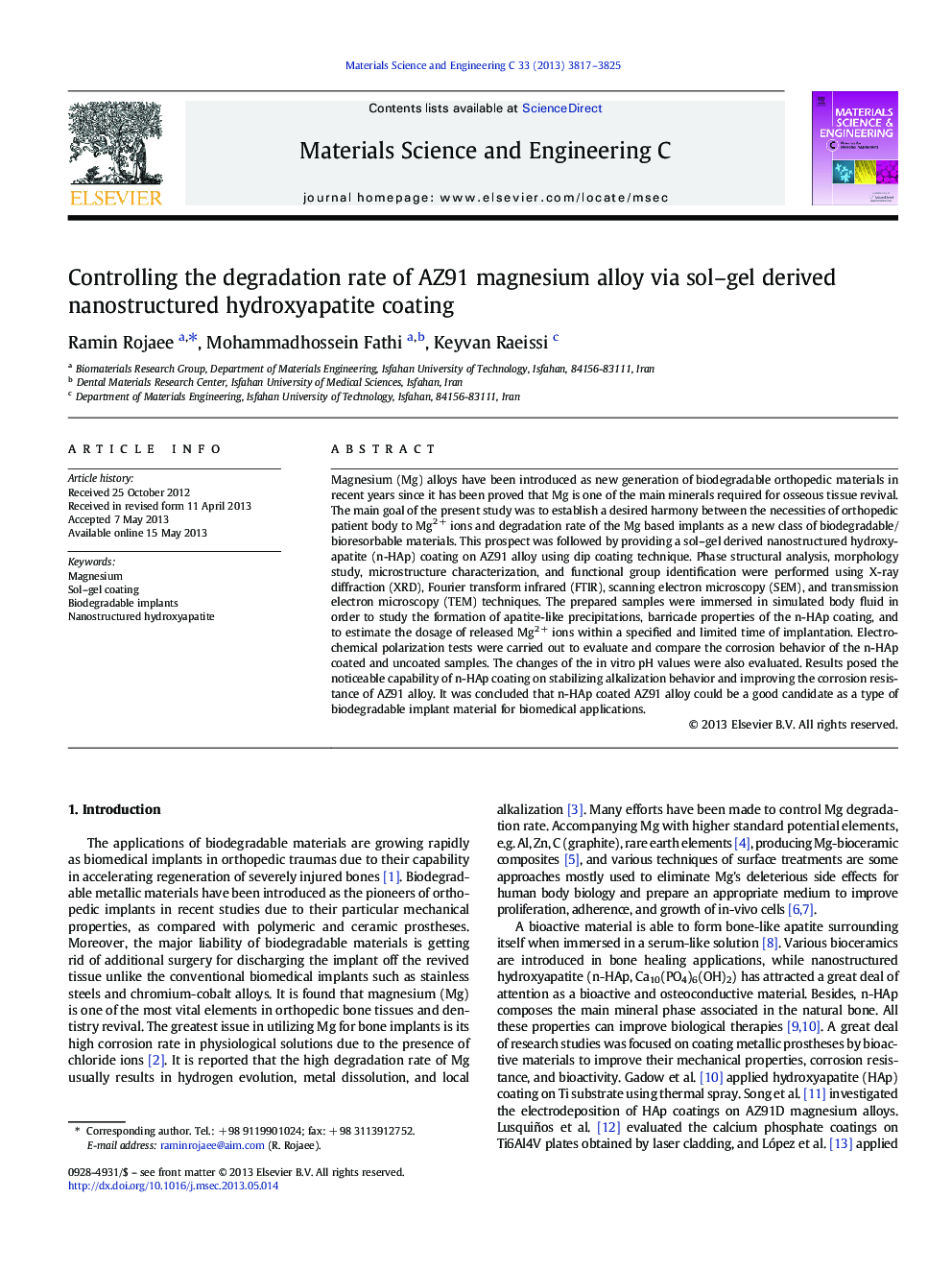| Article ID | Journal | Published Year | Pages | File Type |
|---|---|---|---|---|
| 10614555 | Materials Science and Engineering: C | 2013 | 9 Pages |
Abstract
Magnesium (Mg) alloys have been introduced as new generation of biodegradable orthopedic materials in recent years since it has been proved that Mg is one of the main minerals required for osseous tissue revival. The main goal of the present study was to establish a desired harmony between the necessities of orthopedic patient body to Mg2Â + ions and degradation rate of the Mg based implants as a new class of biodegradable/bioresorbable materials. This prospect was followed by providing a sol-gel derived nanostructured hydroxyapatite (n-HAp) coating on AZ91 alloy using dip coating technique. Phase structural analysis, morphology study, microstructure characterization, and functional group identification were performed using X-ray diffraction (XRD), Fourier transform infrared (FTIR), scanning electron microscopy (SEM), and transmission electron microscopy (TEM) techniques. The prepared samples were immersed in simulated body fluid in order to study the formation of apatite-like precipitations, barricade properties of the n-HAp coating, and to estimate the dosage of released Mg2Â + ions within a specified and limited time of implantation. Electrochemical polarization tests were carried out to evaluate and compare the corrosion behavior of the n-HAp coated and uncoated samples. The changes of the in vitro pH values were also evaluated. Results posed the noticeable capability of n-HAp coating on stabilizing alkalization behavior and improving the corrosion resistance of AZ91 alloy. It was concluded that n-HAp coated AZ91 alloy could be a good candidate as a type of biodegradable implant material for biomedical applications.
Related Topics
Physical Sciences and Engineering
Materials Science
Biomaterials
Authors
Ramin Rojaee, Mohammadhossein Fathi, Keyvan Raeissi,
